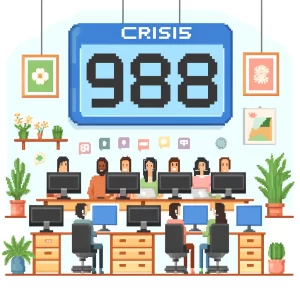
The Urgent Need for Culturally Responsive Suicide Prevention for Latinx Adults
In 2020, suicide became the fifth leading cause of death among Latinx individuals in the United States. Behind this statistic are complex stories—working-aged men who struggle in silence, women facing mounting mental health stressors, and young adults navigating cultural identity conflicts. The increase in suicidal ideation and attempts among Latinx adults is alarming, yet existing prevention strategies often fail to address their unique needs. A new systematic review sheds light on what’s working—and what still needs to change—to make suicide prevention more effective for Latinx communities.
What the Research Found
A comprehensive review of studies published between 2000 and 2024 examined suicide prevention (SP) interventions for U.S. Latinx adults. Researchers screened 4,739 articles and identified 34 that directly addressed suicide prevention strategies tailored to Latinx populations. The results revealed a critical gap: most interventions focused on individual-level solutions, such as translating existing programs into Spanish, rather than designing culturally responsive approaches that account for broader systemic and community factors.
The majority of interventions aligned with the Centers for Disease Control and Prevention’s (CDC) strategy to Identify and Support People at Risk, which includes screening tools and crisis hotlines. However, few programs addressed Creating Protective Environments or Strengthening Economic Supports, despite evidence that financial insecurity and social isolation significantly impact Latinx mental health.
Why Language Translation Isn’t Enough
Many of the reviewed studies adapted suicide prevention programs by simply translating materials into Spanish. But language is only part of the solution. Mental health stigma, cultural beliefs about resilience, and barriers to accessing care—such as immigration concerns or lack of bilingual providers—create significant roadblocks for Latinx individuals in need of support.
For example, some Latinx cultures emphasize familismo, the idea that family is central to well-being. Yet, traditional mental health interventions often focus on individual therapy, neglecting the role of family support. Programs that engage entire families, rather than just individuals at risk, show promise in increasing help-seeking behavior and reducing stigma.
Interventions That Work
A few culturally tailored approaches stand out in the research:
- Promotoras Programs: Community health workers (promotoras) trained in mental health support can bridge the gap between Latinx individuals and formal healthcare systems. These programs have successfully increased depression screening and connection to care in Latinx communities.
- Life is Precious (LIP): Designed for high-risk Latina adolescents, this program combines academic support, creative expression, and mental health counseling in a culturally relevant environment. After two years in the program, none of the participants attempted suicide—a major success.
- Familias Unidas: A family-centered intervention that improves communication between Latinx parents and their children, addressing underlying stressors that contribute to suicidal ideation.
- Emergency Department Interventions: Studies show that suicide prevention strategies in emergency rooms, such as crisis hotlines and follow-up calls, can help at-risk Latinx individuals access support when they need it most.
What’s Next?
The research makes one thing clear: we need more culturally informed suicide prevention efforts. Here are three key recommendations for future interventions:
- Expand Community-Based Approaches – Relying solely on clinical settings ignores the reality that many Latinx individuals distrust traditional healthcare systems. Programs led by community leaders and faith-based organizations may be more effective in reaching those at risk.
- Address Structural Barriers – Economic hardship, immigration stress, and discrimination contribute to mental health struggles. Suicide prevention strategies must address these root causes, not just individual symptoms.
- Develop Multi-Level Interventions – Instead of focusing only on individual treatment, future efforts should include school-based programs, workplace mental health initiatives, and policy-level changes that increase access to culturally competent care.
Join the Conversation
How can we better support mental health in Latinx communities? Have you seen successful culturally responsive interventions in action? Share your thoughts in the comments or on social media using #LatinxMentalHealth.
Let’s work together to ensure suicide prevention strategies reflect the diverse realities of the communities they aim to serve.
Don’t Miss Out – Subscribe Now!
Public health needs your voice today. Join thousands of leaders already making a difference. Subscribe for free to This Week in Public Health and receive weekly updates packed with tools to drive change.
🚨 Urgency matters—take action now and share this blog to expand our reach!



